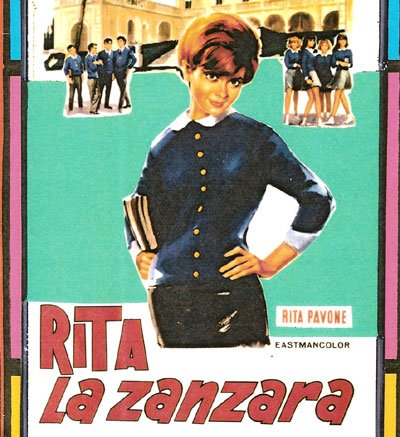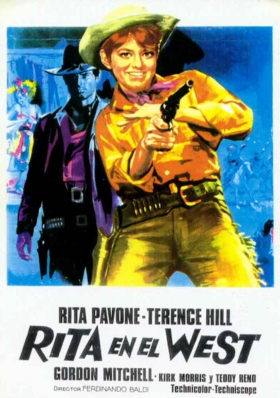"When I first heard them I immediately knew that they were exactly what I'd been waiting to hear for the last ten years. If I hear a better song this year than the duo's The Flats then I'll quite happily lie down and die."
And of course that song duly found its way into our 2010 Streetlamp festive Thirty. After gushing on for some time about the unique, aggressive, experimental, folk-punk sound that these two precocious young musicians had conjured up I went on to state that; "The album will be available soon. Keep an eye on 'Streetlamp' for the details".
Well, Summer rolled into Autumn, and then Autumn into Winter, and still no album. We got in touch with the girls (specifically Mariel) around Christmas time to ask about the album's progress and could immediately feel the frustration and disillusionment in her reply;
"I dunno we hope to have it finished soon. I took a break because I got really pissed off with it for a while, I hated it, then I got back into it and now we only have 3 more songs to go and then she's finished".
We were disappointed, of course, but anticipation only sharpened our appetites. Indeed, in January of this year Gordon wrote in the blog;
"It must go without saying, and must be obvious to anyone who reads our meanderings, that the one recording that shook us to the core in the first year of our Blog was 'The Flats' by Mariel McCormack and Marie O'Hara a.k.a. Botched Fairytale. Like the greatest records we've heard in our lifetime, it didn't just entertain us, it moved us, it motivated us, it reinvigorated us, and it awoken within us a political passion that we hadn't felt in a long time".
Boy, were we hanging a lot on the release of this album. Honestly, the suspense was killing us. So, that is why The Streetlamp is pleased, no delighted, to announce that (fanfare, roll of drums, release the balloons) Botched Fairytale the album is finally with us, my own copy having arrived in the post at the beginning of last week.

And now, I guess, the all important question is hanging in the air. Has the wait been worth it?
You bet it has. This album is a prodigious and singular work of art which should make every minute of its prolonged gestation time worthwhile. To me, the album has the feel of a 'state of the nation' address. It's dozen uncompromising songs seem to be about right here, right now and when I look back on 2011 I know that this album is going to be my soundtrack. Hopefully, it will be yours too and it can be, starting right now, as the album is available as a free download on Mariel and Marie's bandcamp page.
As the album is so unusual, both subtle and substantial, I wanted to place it into some sort of context for you, the prospective listener, and so I fired off a set of questions to the girls, prompted by my own early listens. My questions were, as anyone who is plodding through this dense and ponderous prose can confirm, well, yeah, dense and ponderous and fairly pretentious. But the girls (mainly Mariel), to their great credit have attempted to answer them as fairly as they can and I think that the whole interplay between my over-analytical, psuedo-intellectualism and their own feral, intuitive and instinctive artistry is both entertaining and even mildly illuminating.
Griff: Firstly, the music itself is quite experimental and the lyrics are literate and thoughtful (The Law of Gravity). This combination immediately brings to mind Patti Smith who combined dense, complex lyrics with ostensibly simple, three-chord songs that would veer off into free-form experimentalism. This gave her music the appearance of being simultaneously, and paradoxically, high-art and amateur. Is Patti Smith any sort of influence?
M&M: We both say no to Patti Smith. She's definitely not an influence. In fairness some of her songs sound catchy but I've no idea what she's scuttering on about most of the time.
Griff: Is the experimentalism simply born out of necessity, i.e. your seeming lack of formal musicianship? I know that you share lyric writing, how then do you manage to achieve one, single and effective poetic voice? Does one of you take the lead in the lyric writing or music?
M&M: The "experimentalism" is born out of necessity, it's not meant to be experimental at all, it's just us making the most of our limitations! This album isn't about the music, though. It's kinda just there in the background. We know it's not up to scratch in a "formal musicianship" type of way. As for who does what, it's hard to say exactly. Basically, we go into a room and dont come out 'til there's a song. I'm not sure what happens but, whatever it is, its so horrific that we block it from memory immediately.
Griff: Many of the lyrics seem to be atmospheric portrayals of grotesque, often seedy characters and places (None of Your Money, The Flats, Chasers). The music too, particularly the percussion, tends at times towards the cacophonous and is evocative of industrial music. This combination is reminiscent of the ragged, junkyard poetry and music of Tom Waits. Is he an influence, or does that style come from your literary influences, i.e. Bukowski? Waits often writes songs in the style of a 'short story'. This is something that you also seem to have done. You say:
"It is a collection of 12 uncompromising songs about Ireland and the people in it.
These songs are full of stories, written with unflinching honesty and set in a landscape of wild and decrepit music, excess and failure, personal and political lunacy, tourist attractions, broken bottles, shattered people and battered dreams."
That milieu is the stamping ground for Waits too, but your songs have a much harder edge, an unflinching brutality. Do you recognise that quality yourself in the music? Was it deliberate? How much of the anger or resentment portrayed is auto-biographical? In other words, how much of it comes from disappointment at your own life experiences?
M&M: Tom Waits is an influence. Musicwise, I think the cacophonic thing would be more closley related to the "born out of necessity" thing than an industrial music influence, but I couldn't say for sure we'd have known it was alright to use a piece of steel as the main instrument in a song if it wasn't for Tom.
As it says in the spiel you quoted from, we were "sick of sitting around complaining about the lack of lyrical content...", that's a very simplistic and blurby version of things but, in essence, it's true. I remember this was around the time Glen Hansard won an Oscar with some really vague love song which had an over-sincerity of tone. It wasn't that specifically, but I just remember being really annoyed at the way no-one seems to question anything, and it's like we're all being brainwashed into thinking it's normal to write and listen to songs that don't mean a whole lot. We were saying surely there must be more that people could be doing. You hear that shit (and a lot of shit like it) and then compare it to something like Tom Waits or Cave, whose albums mean something because they really put in the work. We wanted to do an album like them, to find an honest way of writing properly and thoughtfully like that; not trying to sound like them or write like them, I mean finding a way of almost translating those types of songs into our own lives.
We're aware of the brutality (if that's what it is) and it is a bit scary that people might listen to this and think we're a pair of mad miserable bitches but I think it's really important to put that aside and just go for it, which is what we did. (We decided to call the album Botched Fairytale early on, so it was never going to be pretty anyway.) It's not autobiographical.
So we started out with a kind of fuck you to that kind of sugar coating things mentalitity, we're going to talk about real things and be totally in your face and honest, and we don't give a flying fuck that it won't get on the radio or if it's not very palatable, because that's not the point. And we're not going to let the fact that we've no idea what we're doing get in the way! Because we'd nobody to answer to and nothing was expected of us, that made us totally free to do whatever we wanted. And because the (initial) driving force behind us was "the lack of lyrical content" thing, we went quite extreme on it. So I think that's where the brutality (again, if that's what it is) started and that's why the whole thing is so cluttered with words as well.
I don't know if it is that brutal though, it might be. This could well be a really terrible album but im pretty sure it's original at least. So I don't know how to look at it in context because I don't know what to compare it to . There's some very harsh Nick Cave songs for example, maybe ours seem more brutal 'cause twenty-something Irish girls don't usually do songs like that? We seem to be mainly influenced by really well-established, middle-aged men, and nothing to do with anything that's going on in music now or even our own generation, so maybe it sounds more extreme than it is because there's nothing around it to compare it to/cushion it (that I know of anyway)?... Then again maybe it is brutal, I don't know. But yes we were aware of the "brutality" and it was deliberate".
At this point I began to witter on about Joyce and the Irish psyche and started to sound like someone giving a lecture called something like 'The Textural Trajectories of Modern Irish Literature; A verbiose man explains'. Thankfully, the girls wisely side-stepped this line of questioning and Mariel finally pinned things down with the following statement/war-cry:
"It took us an awful lot of effort to write these songs. Three years spent on something that's under an hour is very extreme, it's a lot of attention to detail. The way we see everything is going to be nothing like how anyone else sees it.
For me the whole point of songs is because they're about something that there isn't a word for. Like, otherwise, our album would just be 11 words that we could have written in a few minutes... and we could have spent the rest of the three years learning to play instruments properly! We wrote them to try and explain something, so people either get them or they don't. If it were possible to concisely explain (I dont mean that we can't explain, I mean it would take a very long time) what these are about then there wouldn't have been any reason to write them. Basically we write about the same things that our "influences" write about, we just tried to put these things into our own words and senarios".
Reading through this interchange of thoughts and ideas I'm reminded of the great dancer Isadora Duncan and her famous response to a questioner persistently demanding to know, after having seen one of her dances, "What it meant".
"If I could tell you that, I wouldn't have to dance it."
replied Ms. Duncan, and that is perhaps the artist's only correct response to any prying into the nature and meaning of art. Perhaps art, like religion, requires its mysteries. So, here we have an album which is complicated, intricate and refined, yet, at the same time, ferocious and uncouth. And here we have a duo who present themselves as naive, uncultivated and unrefined, yet can make music which is so complicated, elaborate and subtle. Mystery within mystery!
I sometimes wonder if the Marie and Mariel personas aren't even real but are instead part of an elaborate hoax played out by a Nobel prize-winning poet and a world-renowned experimental composer and musician intent on a critic-confounding Meisterwerk. Can you believe it? I'm imagining Seamus Heaney and Laurie Anderson getting together to make an album of rare and precious beauty just to fuck with me. Lord, these girls are confusing me! Still, I do love it.
Below are my three favourite tracks from the album. I won't try to explain what I think they're about!
I hope you loved those as much as I do.
Griff
xx





































